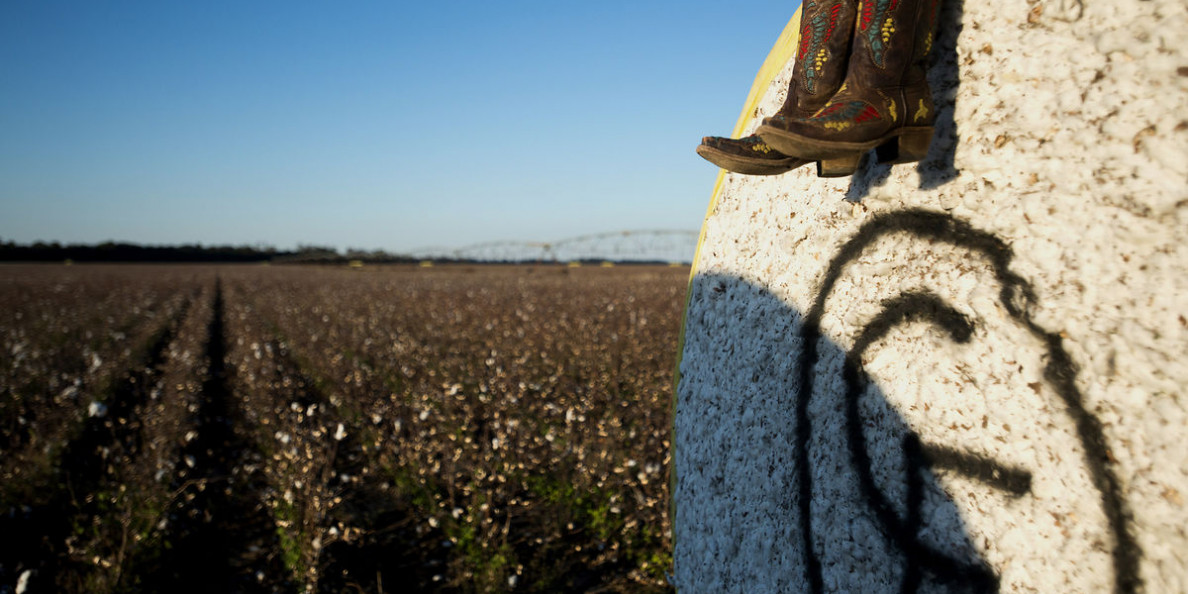September 6, 2024
Are the Texas rains too little, too late, or is there still hope for an upside surprise in the crop? Meanwhile, cotton and other markets wonder whether the Fed will stick the landing or push the economy into recession. Get QuickTake’s read on the week’s events in five minutes.
- There was little action to report on in the cotton market this week. December futures gave up 48 points, settling at 69.44 cents per pound.
- Cotton prices got a slight boost from some short-covering, news of smaller crops in India and Pakistan, and potential storms forming in the Atlantic. The gains were short-lived, and prices failed to break through resistance, eventually retracing and settling close to unchanged for the week.
- There was a slight uptick in daily volume traded this week. The total number of open contracts increased by 1,880 to 229,257.
September has historically been one of the worst months for stocks, and this month’s shaky start has been no different.
- Cracks have started to emerge in the labor market. With inflation easing, the Fed’s attention is now on jobs data when deciding on interest rate cuts at the September meeting. The data from this week provided both reassurance and cause for concern.
- U.S. nonfarm payrolls rose by 142,000 in August, falling short of the expected 161,000. The unemployment rate dropped to 4.2%.
- U.S. ADP’s August employment report, covering private sector payrolls, revealed the smallest increase in job openings in three and a half years, with a rise of 99,000 instead of the expected 145,000.
- Crude oil futures fell to an almost nine-month low on concerns about global energy demand.
- The U.S. Dollar remains near its 2024 low. The looming cut to interest rates has pressured the Greenback in the past month.
- A lower U.S. dollar makes U.S. commodities more attractive to importing nations. However, competing countries such as Brazil have depreciating currencies, adding another layer of competition to the cotton market.
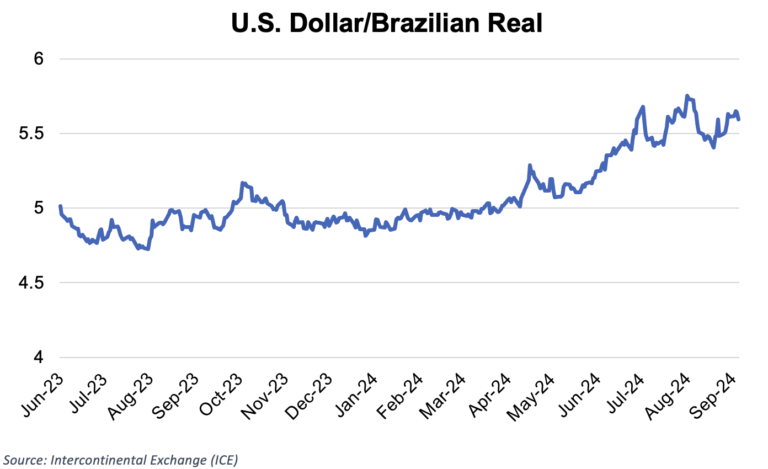
The latest U.S. Export Sales Report showed good sales and average shipments.
- For the 2024/25 marketing year, 207,500 Upland bales were booked for the week. Shipments of 164,100 bales were average for this time of the year.
- Demand from importing countries continues to be a concern. Pakistan topped the list of biggest buyers due to lower cotton production in the country. India’s smaller crop and high Minimum Support Price (MSP) led to its increased purchasing.
- Pima merchandisers sold 10,100 bales for the week and exported 6,000 bales.
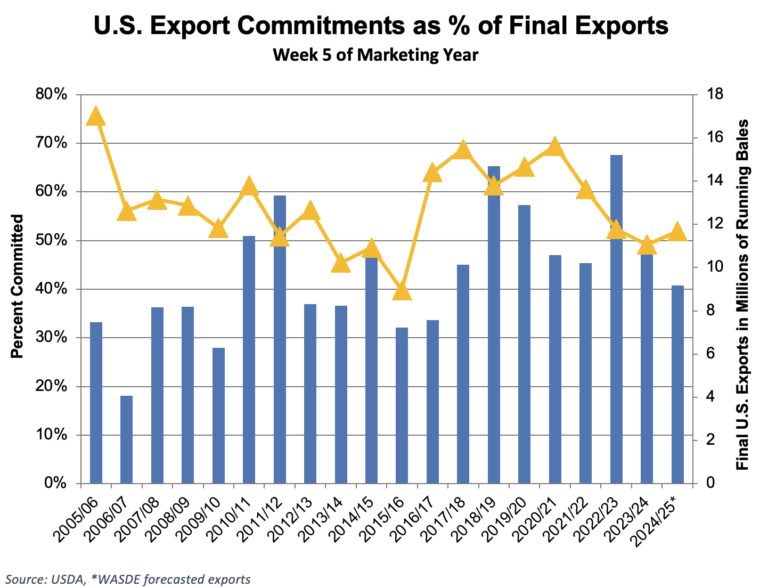
The overall percentage of the crop rated good to excellent in the U.S. increased to 44%.
- The percentage of crops rated good to excellent in Texas increased by 10% this week to 36%. This increase was surprising as the most beneficial rain fell after the reporting period.
- Oklahoma’s good to excellent rating decreased by 8% to 37%, and Kansas’s declined by 9% to 46%.
- In the U.S., 95% of cotton is setting bolls, and 37% of bolls are opening.
- Harvest is wrapping up in South Texas, and defoliation has begun in the central part. Wet weather has been slowing down harvest in the region. Ginning has been progressing steadily. Open skies and warmer weather would be welcome in the coming days, but below-average temperatures and scattered storms remain in the forecast.
- The much-anticipated rain in West Texas arrived as expected. The rainfall varied; some areas received anywhere from one to twelve inches. While it may be too late to benefit much of the dryland crop, the irrigated and later-planted dryland crops should see positive effects from the precipitation. The forecast for the upcoming week is favorable for growing conditions.
- With recent weather, Kansas has fared better than Texas and Oklahoma, receiving timely rains and more ideal growing conditions. Unfortunately, Oklahoma has had hot, dry weather and little precipitation in the past month, which has taken a toll on the crop.
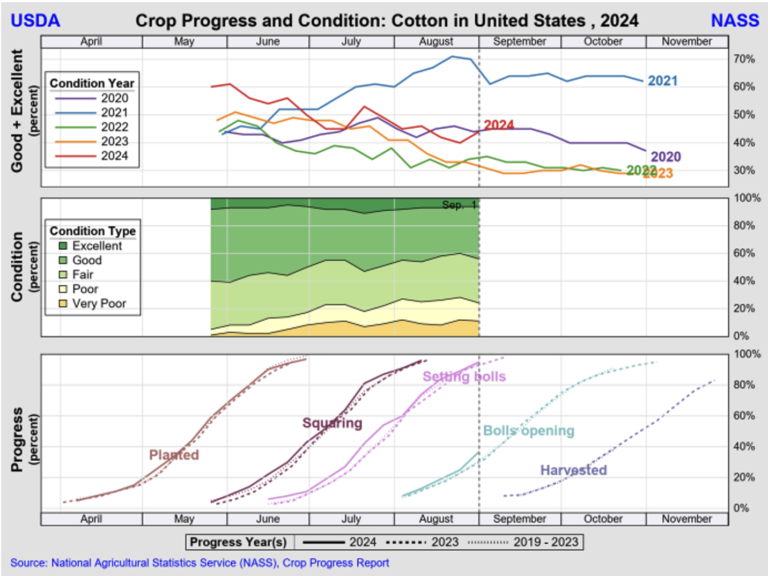
The Week Ahead
- This week’s slew of jobs data will be followed by updated CPI and PPI readings, which will be reported on Wednesday and Thursday. This will help clarify decisions regarding interest rate cuts at the next FOMC meeting on September 17 and 18.
- For the cotton market, nothing matters more than the September 12 release of the WASDE Report. After the beneficial rains throughout West Texas this past week, many question whether the current estimated crop size of 15.1 million bales is correct.
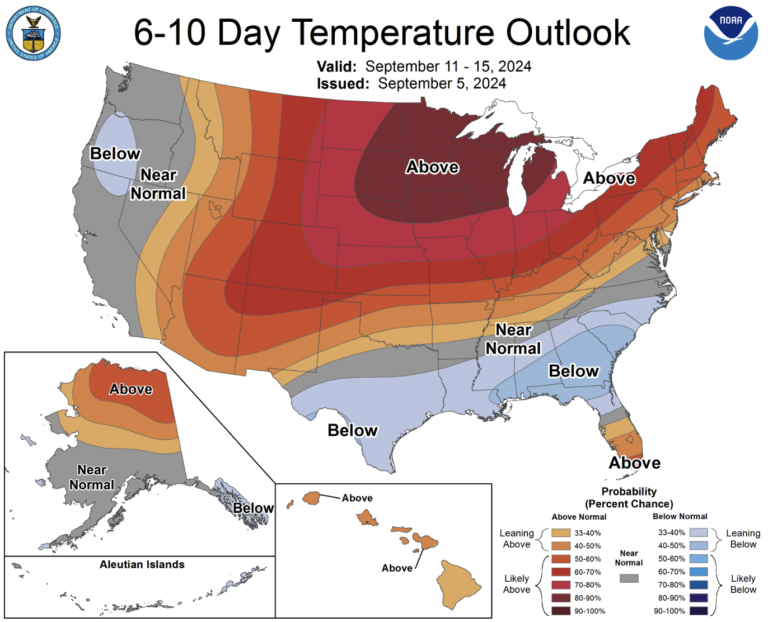
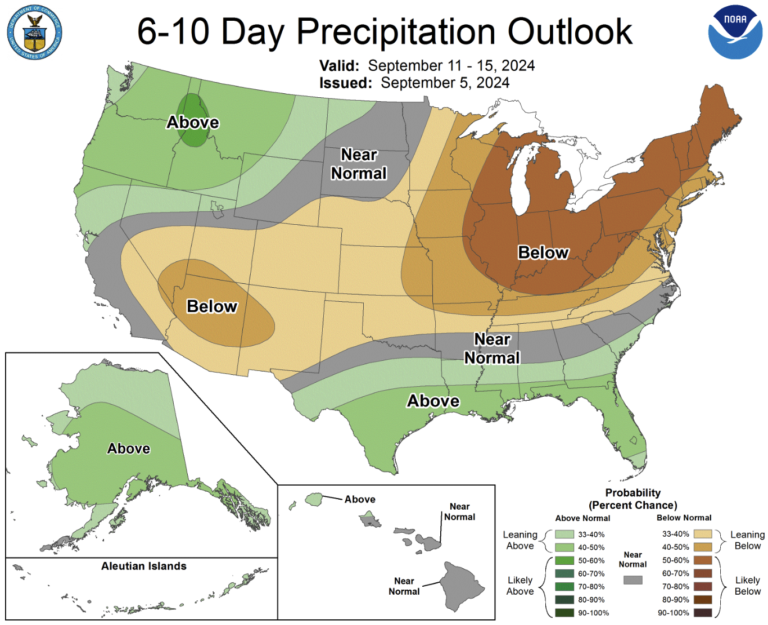
The Seam
As of Thursday afternoon, grower offers totaled 16,301 bales. There were 2,784 bales that traded on G2B platform with an average price of 63.83 cents per lb. The average loan was 52.29, resulting in a premium 11.54 cents per lb. over the loan.


